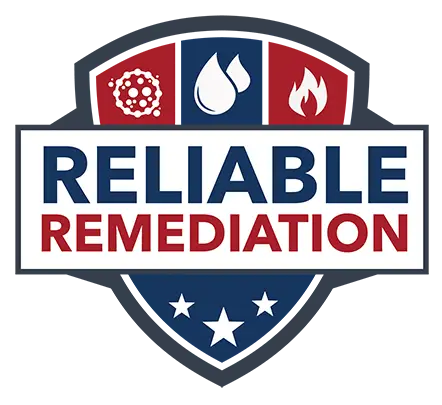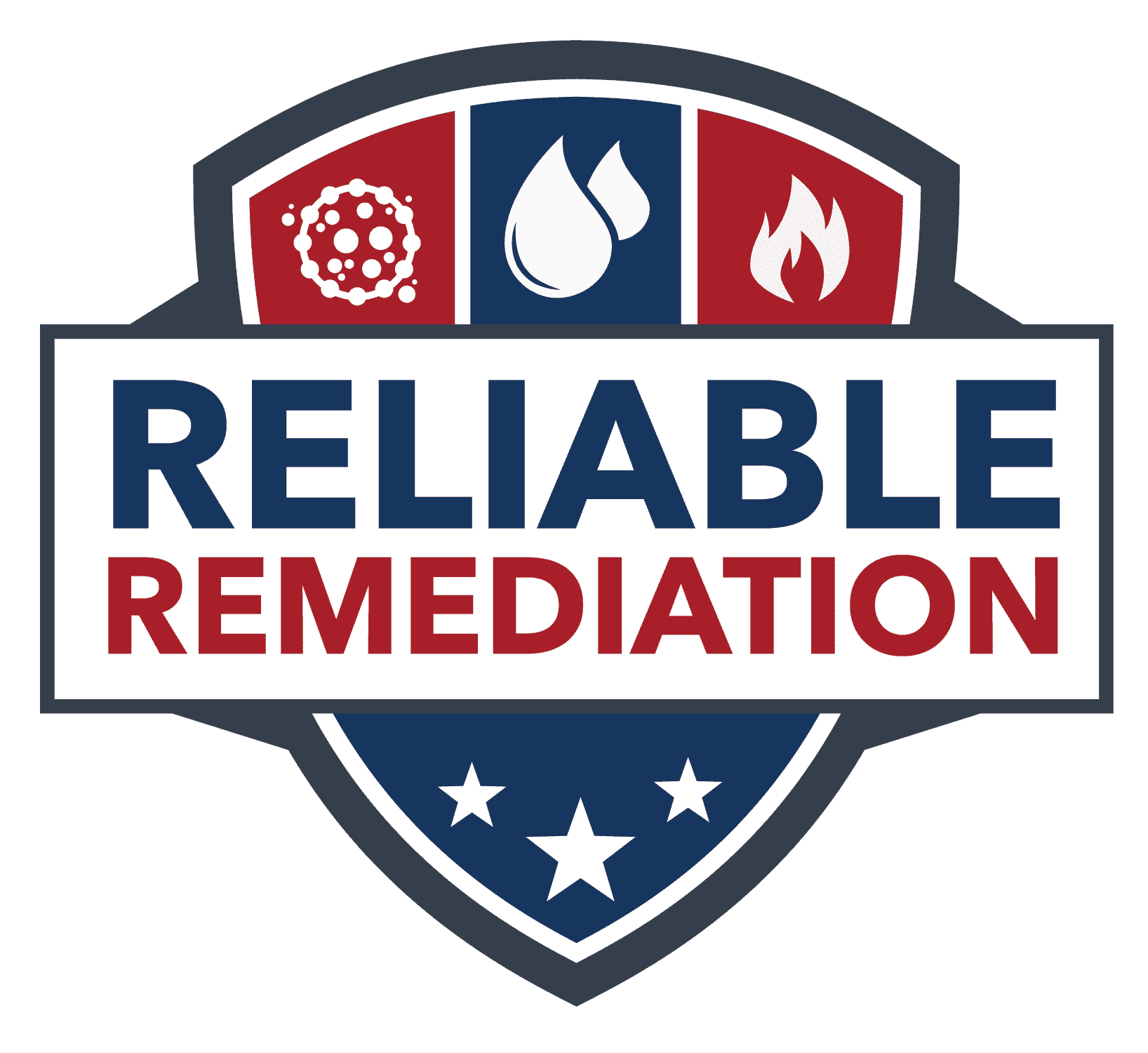Mold Removal Pricing
Mold removal and mold remediation can cost anywhere from a few hundred dollars to tens of thousands of dollars.
How Much Does Mold Remediation Cost?
The cost of mold removal is affected by a number of factors and variables.
Mold removal and mold remediation can cost anywhere from a few hundred dollars to tens of thousands of dollars. The spectrum of jobs ranges from a small DIY jobs to insurance claims requiring extensive cleaning, documentation, and professional assistance. Every situation is different, every building is different, and it’s hard to pinpoint an exact price. We’ll try to provide you with a general price range and list the factors and variables that impact the cost.
Common places to find mold growth:
- Bathrooms
- Under the kitchen sink
- Basements
- Attics
- Closets
Common causes of mold growth:
- Leaky roofs
- Flooding
- Pipe Leaks
- Shower/bath steam
- Humidifiers
Primary Factors that Affect the Cost of Mold Remediation
Cause
Mold is never the actual problem. Mold growth is always the result of underlying moisture or water intrusion problem. Is this from extended exposure to moisture? Was water damage not completely dried out? Was there a flood?
Location
Where is the mold growth? Is it inside the living space or outside? Is the area accessible?
Area
How much area is affected? What is the extent of the damage? Is it inside wall cavities? Is another room or floor affected?
Material
What materials are affected? Can it be sanitized or does it need to be removed?
Company
A handyman or general contractor might have a lower price than a professional remediation company. They also may not carry the appropriate insurance coverages or have specialized training and certifications from reputable organizations like the National Organization of Remediators and Mold Inspectors, NORMI or the Institute of Inspection, Cleaning and Restoration Certification, IICRC.
The mold removal process usually includes utilizing containment (to avoid cross-contamination) and the use of specialty equipment like HEPA-filtered air scrubbers and vacuums. Some materials may be sanitized (or cleaned in place) but damaged or wet building materials most likely will need to be removed and some materials may need to be dried to avoid future growth.
We will explore common places mold growth is found:
Attics
Average Cost for Attic Remediation – $900 to $4,800
Common Causes of Mold Issues in Attics
- Improperly vented bathroom fans;
- Inadequate insulation and gaps in insulation;
- Unbalanced ventilation; and,
- Roof leaks – including chimney issues, flashing leaks, and storm damage.
Variables That Affect the Cost of Attic Mold Removal
Costs will vary depending on the extent of contamination, access to the attic, and construction. Attics are often dark, poorly ventilated, and exposed to dampness from vents and roof leaks. If the mold problem in the attic has been ongoing, removal costs could be above average.
Contamination
Is there three-dimensional growth?
Is it just moisture staining?
How much abrasive cleaning will need to be done to remove the growth?
What is the total surface area affected – square footage?
If the source of moisture was water infiltration – did it affect building materials in the rooms below (sheetrock, framing, or insulation)?
Access
Is the attic a walk-up, pull-down ladder, or a small hatch?
Where is the access located – a closet, a hallway, or in a knee wall?
How big is the access – will it be easy for workers to access and bring equipment in and out?
Construction
Is there flooring in the attic?
What is the total area of the attic – square footage?
Are there trusses that need to be cleaned (or worked around)?
What is the pitch of the roof?
How high is the peak – will we need ladders inside the attic to reach everything?
Is the sheathing OSB or plywood – is it deteriorating or delaminating?
What kind of insulation is in the attic – batts of fiberglass, spray foam, blown-in fiberglass or cellulose?
Will the insulation need to be removed and replaced?
Is there an HVAC system and/or ducting in the attic?
Are there personal effects/belongings stored in the attic?
Pro Tips for Attic Mold
- Check your attic at least twice a year for issues like water intrusion. Check at least once during the cold winter months – many issues manifest when heat from the living space below and into the cold attic. You may see condensation, frost on nails, frost on sheathing, and even an ice build-up!
Mold outside the living space is less of a concern, especially in an attic due to the stack effect and general building science. An item that could increase concern is when there are HVAC units placed in the attic and the mold may be affecting the indoor air quality.
Basements / Crawl Spaces
Average Cost for Mold Removal in Unfinished Basements / Crawl Spaces – $870 to $4,125
Average Cost for Mold Remediation in Finished Basements – $1,900 to $4,860
Common Causes of Mold Issues in Basements and Crawl Spaces
- Water intrusion – flooding, hydrostatic pressure;
- Increased relative humidity – usually from water not getting far enough away from the foundation; and,
- Broken pipes.
Variables That Affect the Cost of Basement Remediation
Costs will vary depending on the extent of contamination, access to the basement/crawlspace, and construction. Basements are susceptible to high moisture levels due to flooding and leaking pipes. And the mold can grow almost anywhere, including on the basement’s drywall, wood, and insulation. Mold outside the living space is less of a concern, but issues in basements and crawl spaces are important to address because much of the indoor air in living spaces above can be affected due to stack effect. An item that could increase concern is when there are HVAC units placed in the space, the mold may be affecting the indoor air quality.
Contamination
What is the total surface area affected – square footage?
Is there surface growth on contents – cardboard boxes, personal items, furniture, or clothing? Many of these items may be able to be cleaned – you may have to determine if it is more cost-effective to clean them or discard and replace them.
Do building materials need to be cleaned abrasively?
Do materials need to be removed and replaced – sheetrock, insulation, paneling, etc.?
Are remaining building materials still wet, e.g., framing and studs and require structural drying (if not dried mold growth will come back)?
What is the square footage of the affected area?
Access
Does the basement/crawl space have direct outdoor access (for removing materials) or will additional containment need to be set to move debris through the living space?
How high is the crawlspace?
What size is the access to the crawl space – will it be easy for workers to access and bring equipment in and out?
Construction
Is the basement fully finished – what are the flooring, ceiling, and wall construction? A fully finished space with built-out walls with sheetrock, insulation, and trim will be more costly than wood paneling nailed up to wooden studs with no insulation.
What is the total area of the basement or crawl space – square footage?
Is the crawl space a dirt floor or poured concrete? Will it need a vapor barrier replacement?
Will insulation need to be removed?
Is there an HVAC unit and/or ducting in the space?
Pro Tips for Basement and Crawl Space Mold
- Many basements and crawl spaces have moisture problems because water (groundwater and rainwater) does not get far enough away from the structure.
- The ground should slope away from the building at a recommended rate of 6 inches for every 10 feet.
- Gutters (if installed) should be properly sized, sloped appropriately, and cleaned regularly.
- Downspouts should not evacuate right at the foundation, they should be directed as far away from the foundation as possible (at least 10 feet). Downspout extensions can be attached and buried (to avoid being knocked off, being crushed, or becoming a tripping hazard). For additional protection, the downspout extensions can drain to a dry well.
- Groundwater can also be redirected using landscaping remedies like drainage swales and yard drainage systems.
- Severe issues may require the installation of perimeter drains, french drains, sump pumps, and dehumidifiers.
- Crawl spaces with exposed dirt floors should have a plastic vapor barrier installed on top of the dirt. Severe cases may require full encapsulation and dehumidification.
Bathrooms
Average Cost for Mold Remediation in Bathrooms – $500 to $2,780
Common Causes of Mold Issues in Bathrooms
- Water leaks from supply and drain lines – including sinks, toilets, showers/tubs;
- Condensation of supply lines inside walls (common in homes with wells);
- Leaks from failed toilet wax rings;
- Minor back-ups and blockages that may not have been dried properly; and,
- Surface growth on walls, windows, and other surfaces from increased relative humidity.
Variables That Affect Cost the Cost of Bathroom Mold Removal
Costs will vary depending on the extent of contamination, access to the affected area, and construction. While bathrooms provide the perfect environment for mold growth, the mold that is most likely to grow from day-to-day steam and condensation is usually surface mold – routine maintenance, repainting, and improving ventilation will help this situation. The mold that develops behind a vanity or sink or behind or underneath a bathtub – especially an ongoing leak, can result in the need for demolition and reconstruction that will be necessary to reach and remove the mold and correct the root cause of the moisture.
Contamination
Is the affected area visible – or is it in a wall cavity, behind a vanity, or under the flooring?
Are you dealing with surface growth or growth that is more entrenched from long-term moisture or leaks?
Can growth be sanitized and encapsulated or does it need full remediation and removal?
How much material is affected?
What is the square footage of the affected area?
Access
Are affected areas accessible from wall/floor cavities in adjacent rooms?
Construction
What type of flooring is installed – tile, linoleum, vinyl planks, hardwood, laminate?
Are cabinets real wood or medium-density fiberboard (MDF)? MDF bloats when it gets wet and mold growth generally cannot be cleaned off of it – it may need to be removed and replaced.
Bathroom Mold Pro Tips
- Install a good exhaust fan or replace your existing fan with a stronger one. A proper-sized fan should move at least one cubic foot of air per minute (cfm) for every square foot of your bathroom. A small bathroom with a sink and toilet may be fine with 80 cfm, while a larger master bath with a sink, a jetted tub, a toilet, and a shower – a common configuration in new homes – would need a fan with 200 cfm. Check this fan-sizing article from Bob Vila.
- If you shower and leave the house quickly, you may not be running the exhaust fan for a long enough time. Try installing a timer switch that can be set to shut off after 45-60 minutes. Now you don’t have to choose between leaving the fan on for 10 minutes or leaving it on all day.
- “Places that are often or always damp can be hard to maintain completely free of mold. If there’s some mold in the shower or elsewhere in the bathroom that seems to reappear, increasing ventilation (running a fan or opening a window) and cleaning more frequently will usually prevent mold from recurring, or at least keep the mold to a minimum.” from the Environmental Protection Agency
Kitchens
Average Cost for Kitchen Mold Removal – $625 to $2,690
Common Causes of Mold Issues in Kitchens
- Water leaks from supply and drain lines – including sinks, dishwashers, and refrigerator supply lines;
- Minor back-ups and blockages that may not have been dried properly; and,
- Surface growth on walls, windows, and other surfaces from increased relative humidity from cooking and water usage.
Variables That the Affect Cost of Mold Removal
Costs will vary depending on the extent of contamination, access to the affected area, and construction. Kitchens are a room with a lot of water and appliances that utilize water. This can increase the relative humidity in the space and increases the risk of long-term leaks that cause mold growth.
Contamination
Is contamination contained to one cabinet under the sink?
Are the materials severely affected and do they need to be replaced?
Are hidden supply lines (walls and floors) leaking and causing extensive issues that will require extensive demolition and cleaning?
How much material is affected?
What is the square footage of the affected area?
Access
Is plumbing accessible from another area (basement or adjoining room) or inaccessible on an exterior wall?
Will cabinets need to be detached?
Construction
What type of flooring is installed – tile, linoleum, vinyl planks, hardwood, laminate?
Are cabinets real wood or medium-density fibreboard (MDF)? MDF bloats when it gets wet and mold growth generally cannot be cleaned off of it – it may need to be removed and replaced.
HVAC / Ducts
Average Cost for Mold Remediation in Ducting and HVAC – $1,150 to $3,960
Common Causes of Mold Issues in HVAC Systems and Ducting
- Water damage or flooding affecting the HVAC unit, air handler, or furnace;
- Clogged condensation lines;
- Improperly sized HVAC system; and,
- Too many registers closed causing condensation.
Variables That Affect the Cost of HVAC Remediation
Costs will vary depending on the extent of contamination, access to the affected area, and construction. An HVAC system’s ductwork is susceptible to moisture buildup and condensation, leading to mold growth. Air ducts require specialized mold remediation to avoid leaving airborne spores behind. Mold grows from moisture in the air ducts from hot and cold air condensing in the vents. Because mold spores are easily airborne, turn off your HVAC system once mold is discovered, so you don’t spread it throughout the structure.
Contamination
Is growth confined to the coils or it throughout the system and ducting?
Can it be sanitized or do parts of the HVAC system need to be replaced?
Is growth just on registers? This situation is likely from condensation and not necessarily throughout the entire system.
Access
Is the system readily accessible – or is it in a closet or in a tight attic space?
Is ducting accessible – or is it above a finished or drop ceiling, or run through finished walls?
Construction
Is the ducting rigid or flexible? Microbial growth cannot be adequately cleaned from flexible ducting – so it must be replaced.
HVAC Pro Tips
- On vs Auto – HVAC systems generate conditioned air by blowing air through coils that are heated or cooled. When you switch your blower to “on,” this means the fan will blow air continuously, even when the heating or cooling coils in your HVAC system aren’t activated. On the other hand, setting the fan to “auto” means it will turn on automatically when your HVAC system is blowing conditioned air. Once the room reaches the desired temperature, the fan will shut off until the next heating or cooling cycle.
- Why Set Your Thermostat Fan to “On”? Letting your thermostat fan run uninterrupted allows for continuous air circulation throughout the house, which helps ensure the even distribution of warm or cool air. It also helps prevent particulates from a fuel-burning furnace from recirculating, as the air will be filtered at the intake registers. The continuous operation also puts less stress on the thermostat fan (as opposed to a stop-start operation), making it less likely to break down. Keep in mind that air filters usually get clogged faster when the thermostat fan is set to “on”.
- What About Setting Your Thermostat Fan to “Auto”? Setting your thermostat fan to “auto” consumes less energy, as the fan only runs when it needs to blow conditioned air into a room. This setting allows more efficient dehumidification, which helps get rid of excess indoor humidity during warm summer months. Breaks during its operation allow moisture from the cooling coils to drip and drain into the condensate pans. During air conditioning season it’s important to set your fan to “auto”.
Interior Living Space / Office Space / Whole Home
Average Cost for Mold Remediation in One or Two Rooms – $2,145 to $5,690
Average Cost for Whole Home Mold Removal – $11,200 to $32,625
Average Cost for Mold Remediation in an Office – $1,625 to $3,655
Common Causes of Mold Issues in Livable Spaces
- Water intrusion from roof leaks;
- Broken, leaking, or frozen pipes;
- Window failure (caulking failure, sash or frame warping) allowing rain inside the building envelope;
- Humidity blooms which is the growth of mold within a living space due to the elevation of indoor relative humidity at or above 60 percent relative humidity for a period of time greater than 72 hours.
Variables That Affect the Cost Mold Removal
Costs will vary depending on the extent of contamination, access to the affected areas, and construction. While there’s no such thing as a mold-free environment, it can be contained and prevented from spreading. You can stop future mold growth by installing proper ventilation and controlling the humidity levels in every room of your building and fixing any pipe, roof, or window leaks immediately. If any flooding has occurred, proper dry out by a professional is recommended.
Contamination
Is the suspected mold surface growth on contents like clothing, leather shoes – maybe in closets or small spaces?
Do you see and smell mold or a musty smell – is it worse when it rains?
Are there unexplained discolorations on building materials like sheetrock, carpet, or trim?
Is there extensive growth from improperly dried-out flooding or water intrusion?
Is it possible the building was not ventilated well enough and there is surface growth on a large area of building materials?
How much material is affected?
What is the square footage of the affected area?
Access
Is the area easily accessible or are there a lot of contents – this may inhibit your ability to spot problems?
Will the area or adjacent areas need to be used during remediation?
How much containment will be necessary?
Construction
What type of building is it? Manufactured homes, mobile homes, and construction trailers are built with different materials and construction types than conventional homes and buildings.
What type of flooring is installed – tile, linoleum, vinyl planks, hardwood, laminate?
Are there wooden or steel framing members? Commercial buildings are constructed with different materials and protocols than residential buildings.
It’s Easy to Get the Help You Need

Get an Evaluation

Receive a Customized Plan


